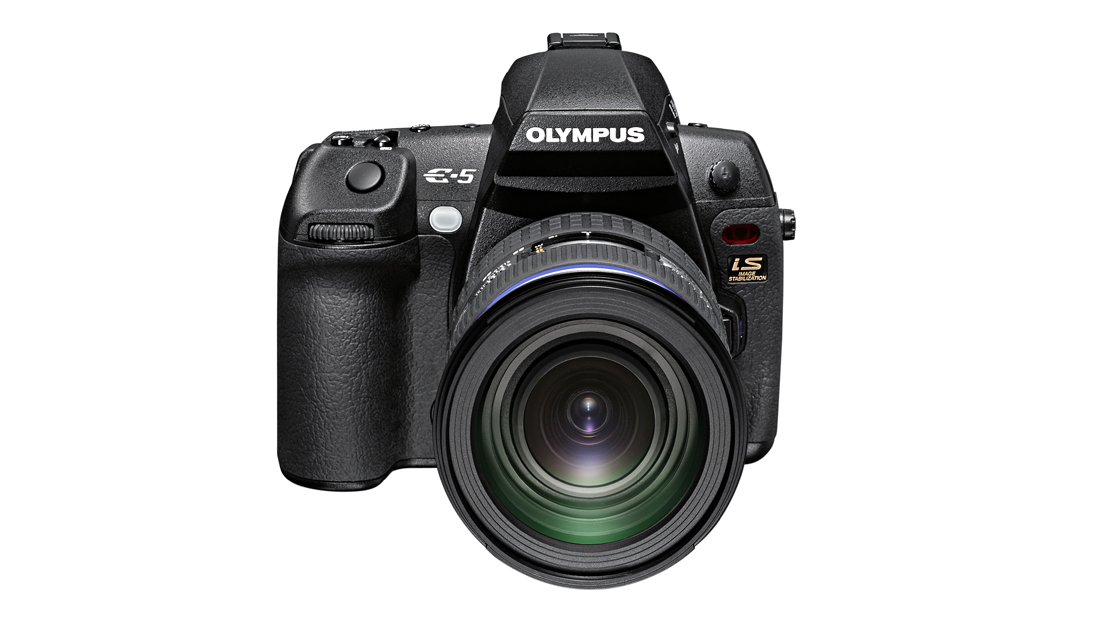Why you can trust TechRadar
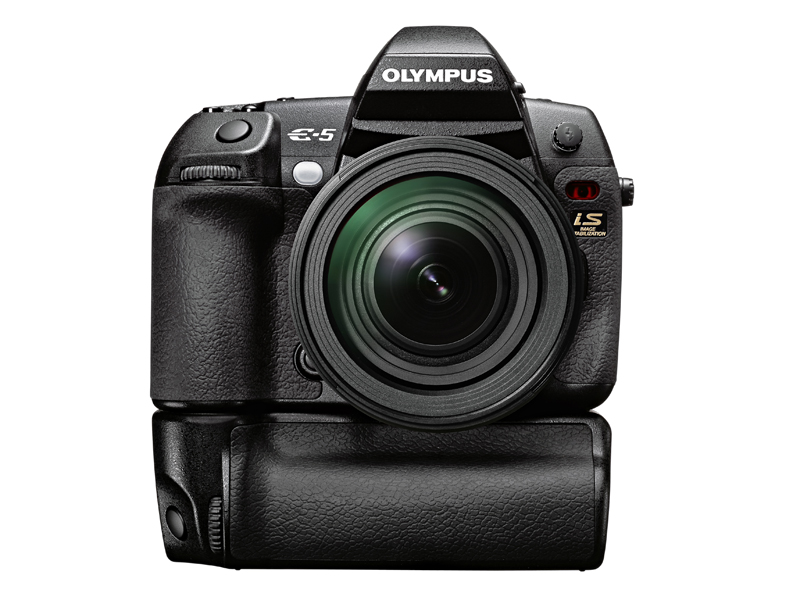
When the Olympus E-5 high sensitivity noise reduction system (what Olympus calls the Noise Filter) is in its default or Standard setting, there is very little chroma noise visible in the images it produces. In fact, even with the filter turned off the interference is primarily luminance noise. The results are very good up to ISO 3200 when the level of detail visible drops.
There's no dramatic smudging, but details just start to get a little fuzzy and merge into one another. Helpfully, the raw development module of Olympus Viewer 2 which is bundled with the E-5 allows the level of noise reduction applied to raw files to be adjusted to other 'in-camera' settings. Generally, the best compromise between noise and detail visibility in ISO 3200 and ISO 6400 images is struck when the in Noise Filter is set to Low.
High sensitivity raw images processed using Adobe's Camera Raw have a much coarser texture than those processed using the supplied Olympus Viewer 2 software. The Adobe processed image has less visible chroma noise, but it also has a fragmented texture.
Although noise often appears well controlled when images are viewed at pixel level, even toned areas in images captured at ISO 64000 sometimes exhibit patches of subtly false colour. In one image, for example, a plain wall shot in low light appears to have very faint broad bands of red.
For a 12-million-pixel camera the Olympus E-5 can resolve a high level of detail and the low sensitivity results looks fairly natural rather than overtly digital when examined at 100% on the computer screen. As a general rule, the greatest level of detail is captured when the in-camera noise reduction system is turned off, but as the visibility of noise and detail varies to some extent depending upon the subject it is best to shoot raw images that can be adjusted later if necessary.
On the whole, Olympus demonstrates a good understanding of colour and exposure, and the E-5 doesn't disappoint, though it has a tendency to make reds a bit too vibrant. Switching to the Portrait Picture mode enhances red even further, which is not especially flattering for most subjects apart from with the palest skin.
While the results can be obtained by post capture adjustment, Olympus is very keen on its filter effects. Conveniently on the Olympus E-5 these can be accessed via the Picture Mode options. For most occasions, however, the Natural Picture Mode is the way to go.
We found that the automatic white balance setting turns out natural looking images in a range of natural lighting situations and it retains the anticipated colour of artificially illuminated scenes. Candle-lit settings, for instance, still have plenty of atmosphere. In some cases, for example, when shooting under an overcast sky, the AWB setting produces better results than the warmer output generated by employing the cloudy white balance setting.
Software
Olympus supplies the E-5 with Olympus Viewer 2, which can be used to facilitate image download, organisation into folders and processing. The range of controls is extensive, and although they are largely limited to in-camera type adjustments (plus a curves control option), it is very good. In fact it gives Canon's excellent Digital Photo Professional software that is bundled with Canon DSLRs a good run for its money and Olympus E-5 users should not over look it when processing raw files.
As part of our review process we've implemented a new testing procedure. To test the Olympus E-5 image quality, we shot our resolution chart, each with the Olympus 12-60mm lens.
If you look at our 100% crops below or download the images and view the central section at 100% (or Actual Pixels) you will see that, at ISO 100 the Olympus E-5 is capable of resolving up to 26 (line widths per picture height x100) in it's highest quality JPEG files. Examining images of the chart taken at each sensitivity setting reveals the following resolution scores in line widths per picture height x100:
JPEGs
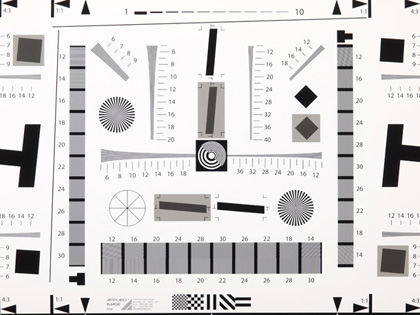
0.4secs at f/8, ISO 100: 24
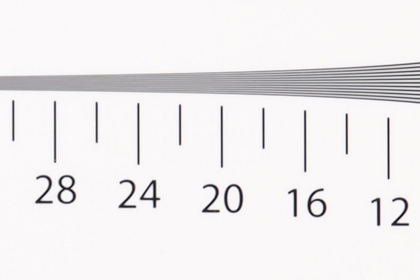
ISO 100: 24 (Click here to view full-res image)
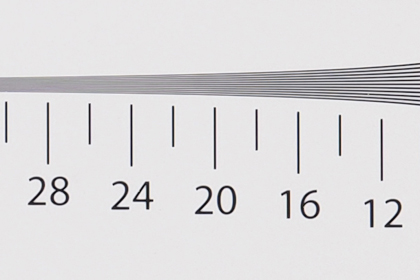
ISO 200: 24 (Click here to view full-res image)
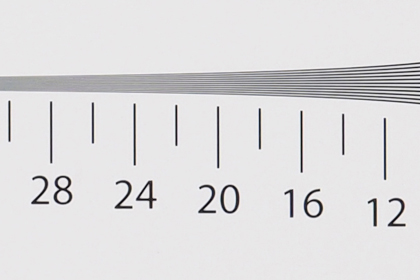
ISO 400: 24 (Click here to view full-res image)
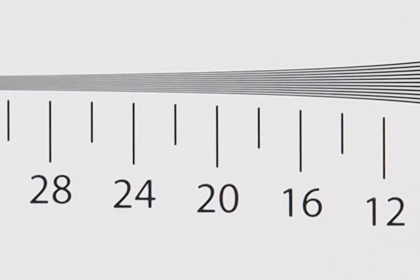
ISO 800: 24 (Click here to view full-res image)
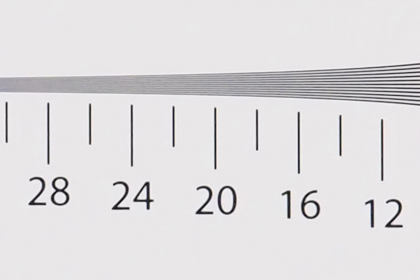
ISO 1600: 24 (Click here to view full-res image)
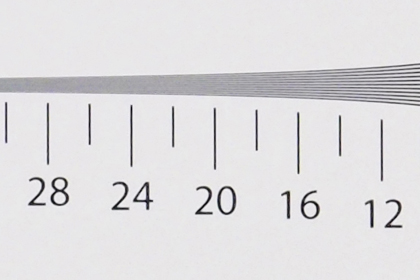
ISO 3200: 20 (Click here to view full-res image)
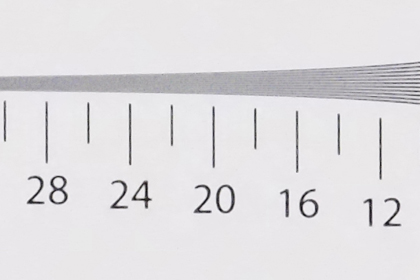
ISO 6400: 16 (Click here to view full-res image)
Raw files
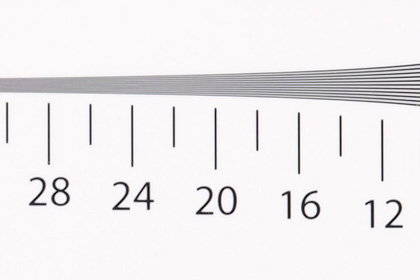
ISO 100: 26/24 (Click here to view full-res image)
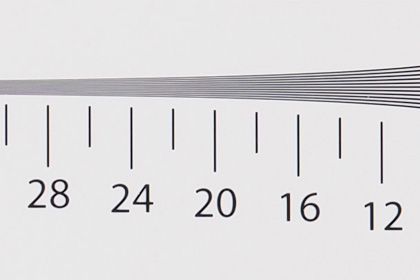
ISO 200: 24 (Click here to view full-res image)
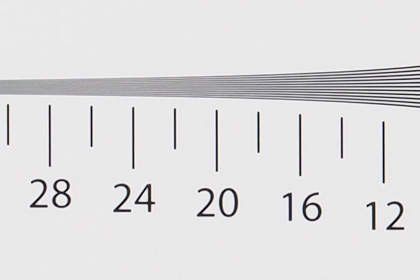
ISO 400 (Click here to view full-res image)
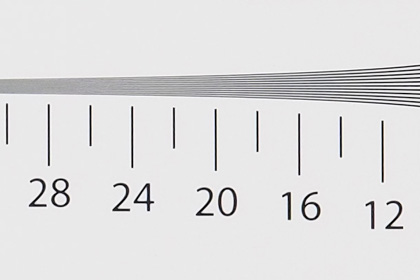
ISO 800: 24 (Click here to view full-res image)
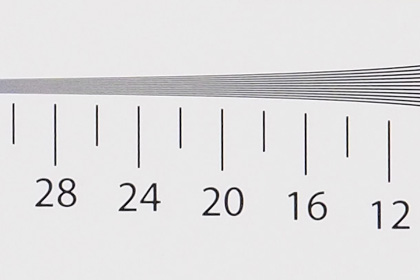
ISO 1600: 24 (Click here to view full-res image)
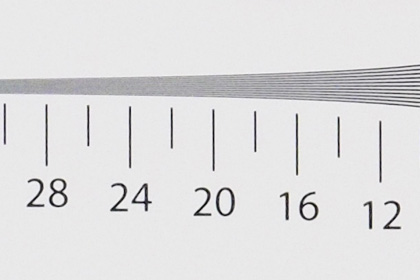
ISO 3200: 20 (Click here to view full-res image)
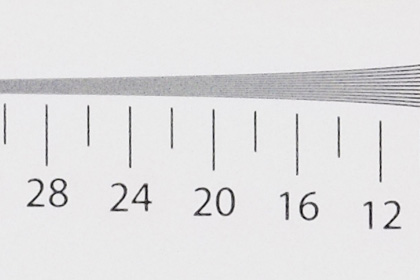
ISO 6400: 18 (Click here to view full-res image)
Current page: Olympus E-5: Image Quality
Prev Page Olympus E-5: Controls and features Next Page Olympus E-5: Verdict